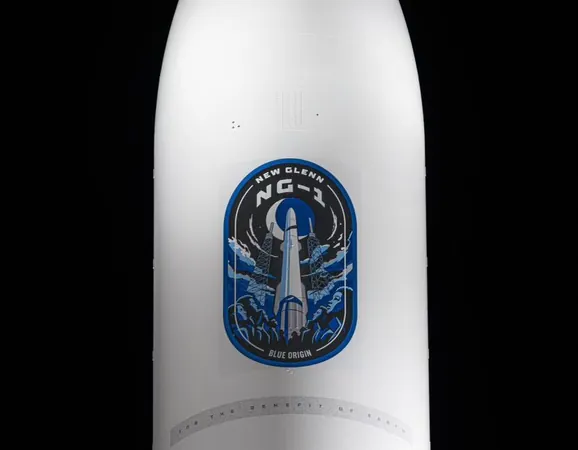
Weather Delays New Glenn Rocket Launch as Blue Origin Preps for Historic Flight
2025-01-11
Author: Jia
COCOA BEACH, Fla. – The countdown to the much-anticipated debut of Blue Origin's New Glenn rocket is now largely contingent on weather conditions, a common scenario in the aerospace community during critical launch windows. As the final preparations are underway at Cape Canaveral, the aerospace firm is closely monitoring for ideal skies and calm seas necessary for the rocket's inaugural lift-off.
Earlier this week, Blue Origin completed the integration of its massive New Glenn rocket and successfully transported it to the launch site at Cape Canaveral Space Force Base. However, challenges have emerged due to rough sea conditions in the Atlantic Ocean, which have complicated plans for recovering the rocket's first stage on a drone ship—a crucial aspect of their mission strategy.
The initial launch attempt was scheduled for January 10 at 1 AM ET but was postponed as conditions at sea didn’t permit a safe recovery. Despite some improvement, a follow-up attempt was canceled as well. The new launch window is set for January 13 at 1 AM ET, where better weather is expected. The three-hour launch window allows for some flexibility, with Blue Origin streaming the launch activities live one hour prior to lift-off.
Anticipation Builds for a Technical Milestone
Fueling the New Glenn rocket is a multi-stage process, and according to the latest timeline from Blue Origin, several critical steps will take place leading up to the launch. The process will start with loading liquid hydrogen into the second stage approximately 4.5 hours before the scheduled liftoff, followed by additional fuels for the rocket's booster stage. The two stages of fueling are designed to ensure optimal performance when they ignite.
The booster stage, powered by seven BE-4 engines, is set to burn liquid methane for a duration of 3 minutes and 10 seconds. After separating from the second stage, the booster will aim to execute a controlled reentry maneuver, culminating in a landing attempt roughly 9 minutes and 28 seconds into the flight.
While Blue Origin has implemented rigorous testing and safety protocols, the debut flight of New Glenn carries inherent risks, especially with the aim of landing the first stage on a drone ship. Landing successfully on the initial attempt is a formidable challenge, raising both excitement and apprehension among space enthusiasts. Still, Blue Origin remains optimistic about what this flight could signify for the future of space exploration.
"Our objective is to reach orbit," stated Blue Origin CEO Dave Limp. "Anything beyond that is a bonus. Landing our booster offshore is ambitious—but we’re going for it. Regardless of the outcome, this mission will provide invaluable insights."
What Lies Ahead
The New Glenn mission isn't just a test flight; it's a significant milestone that aims to introduce new technologies for Blue Origin's vision of future space transport. This mission also includes carrying a Blue Ring pathfinder—a demonstration of the company's innovative in-space vehicle designed to provide energy and services to future payloads. The outcomes from this flight will undoubtedly shape the trajectory for Blue Origin’s upcoming projects, making it a must-watch event in the ever-evolving landscape of space exploration.
Stay tuned for updates as we monitor the countdown to what could be a pivotal moment in aerospace history!




 Brasil (PT)
Brasil (PT)
 Canada (EN)
Canada (EN)
 Chile (ES)
Chile (ES)
 Česko (CS)
Česko (CS)
 대한민국 (KO)
대한민국 (KO)
 España (ES)
España (ES)
 France (FR)
France (FR)
 Hong Kong (EN)
Hong Kong (EN)
 Italia (IT)
Italia (IT)
 日本 (JA)
日本 (JA)
 Magyarország (HU)
Magyarország (HU)
 Norge (NO)
Norge (NO)
 Polska (PL)
Polska (PL)
 Schweiz (DE)
Schweiz (DE)
 Singapore (EN)
Singapore (EN)
 Sverige (SV)
Sverige (SV)
 Suomi (FI)
Suomi (FI)
 Türkiye (TR)
Türkiye (TR)
 الإمارات العربية المتحدة (AR)
الإمارات العربية المتحدة (AR)